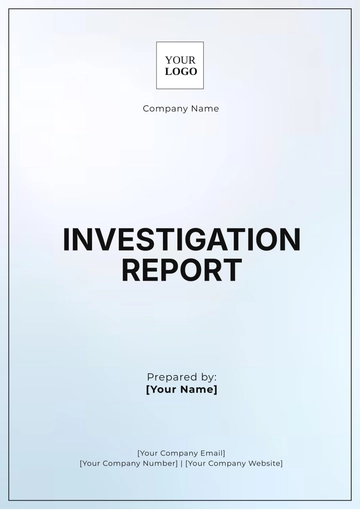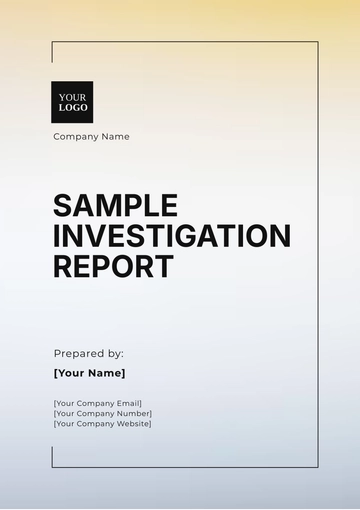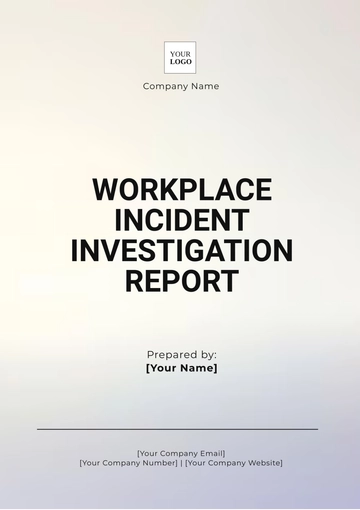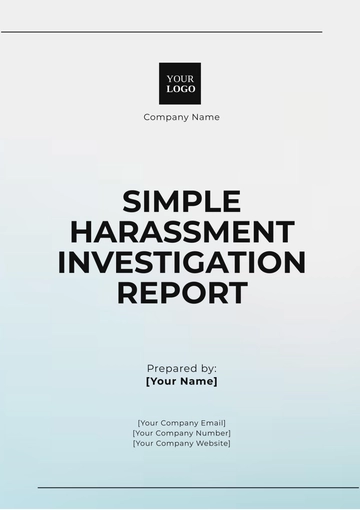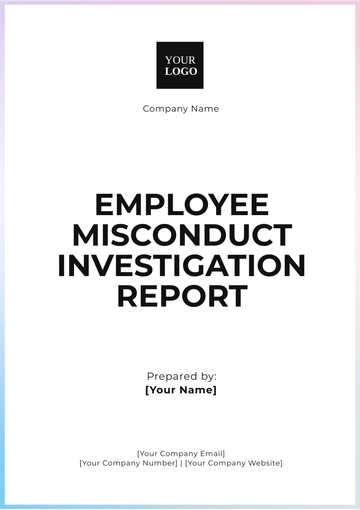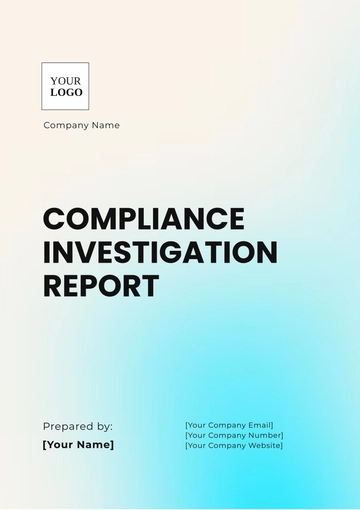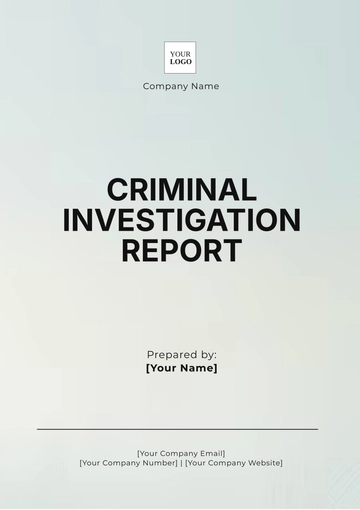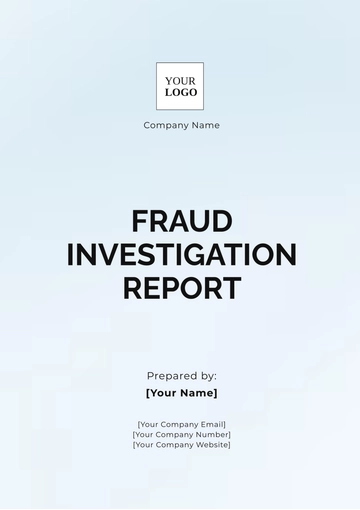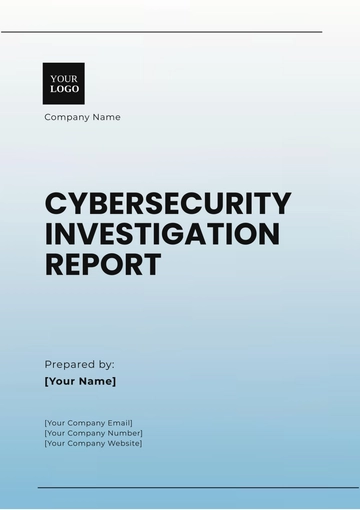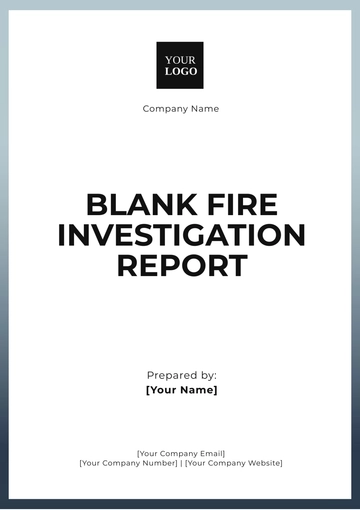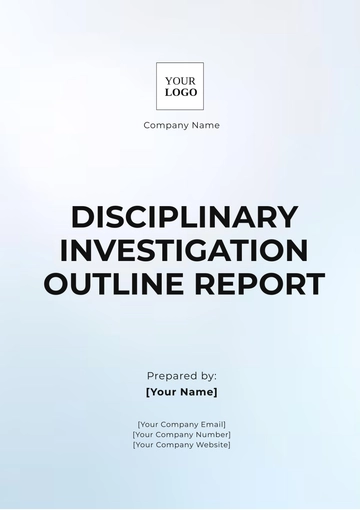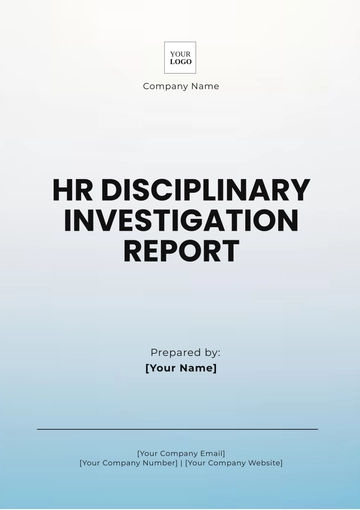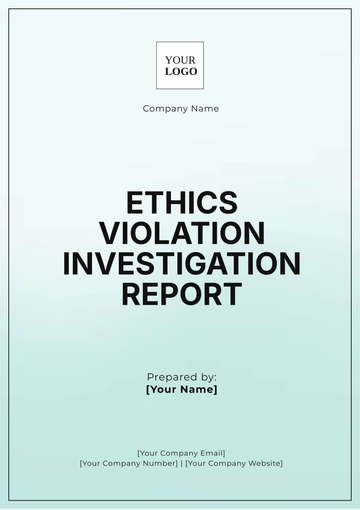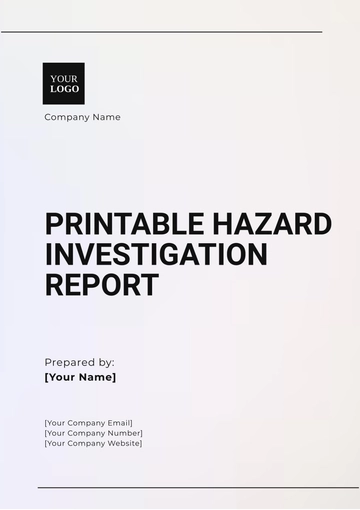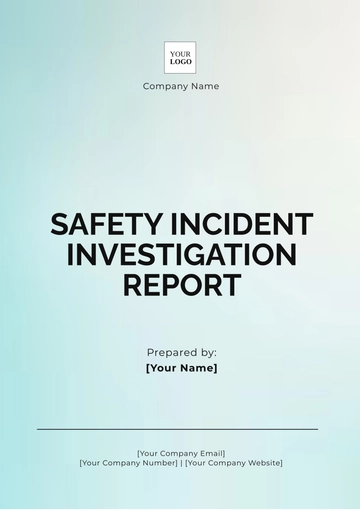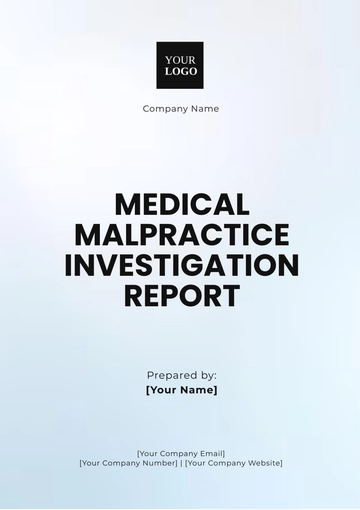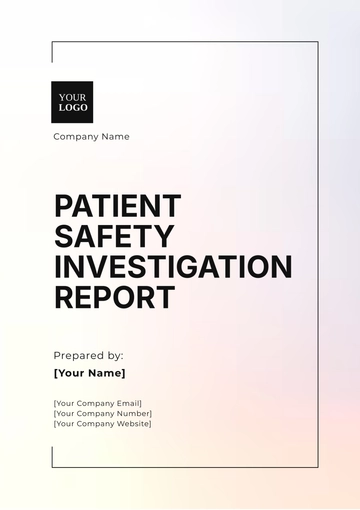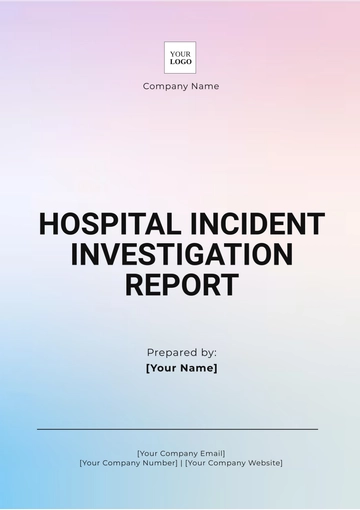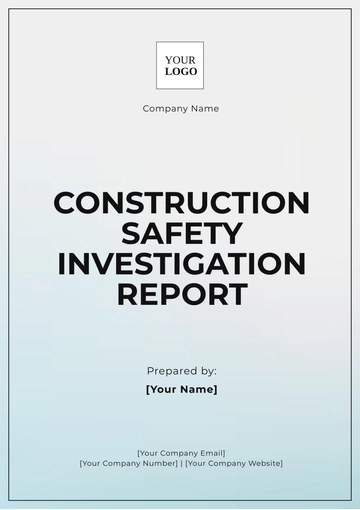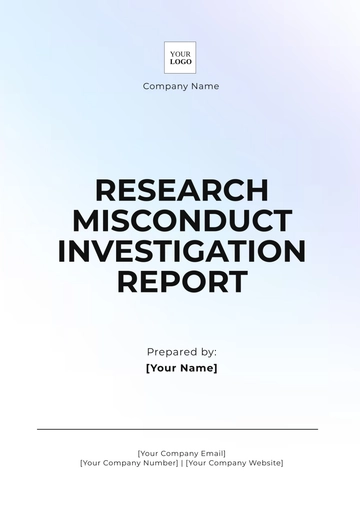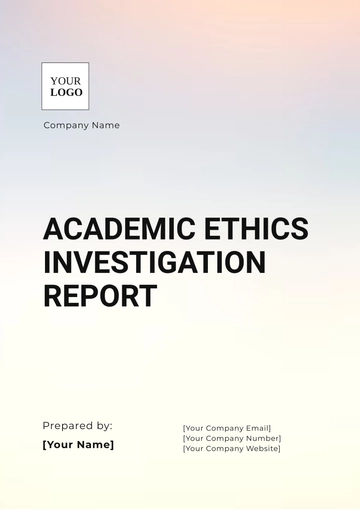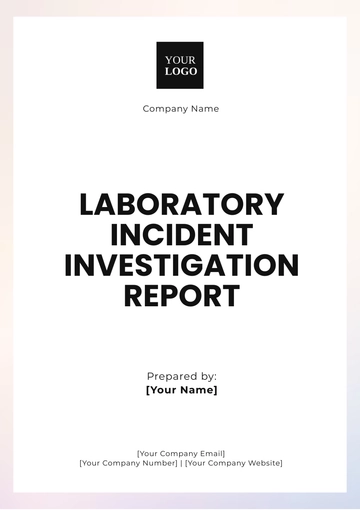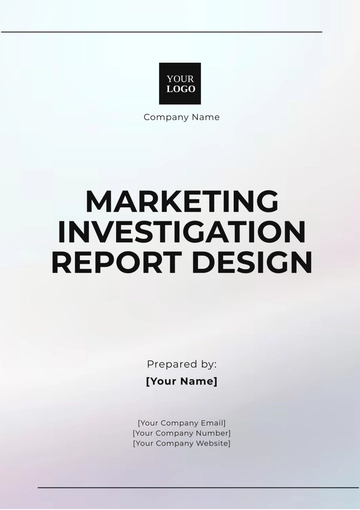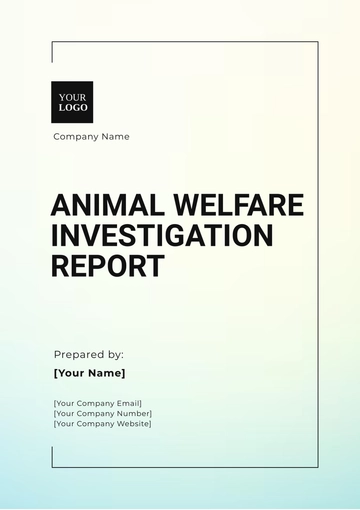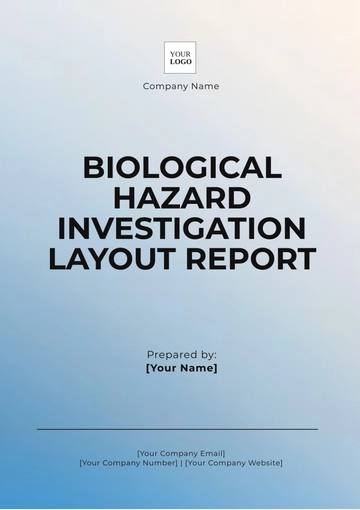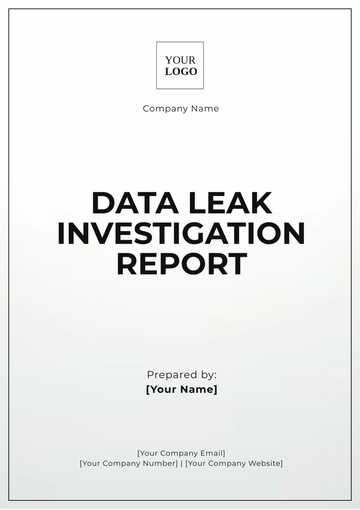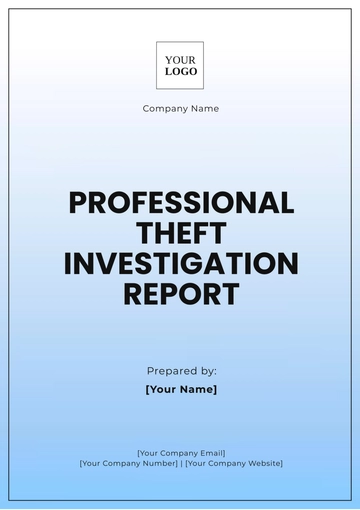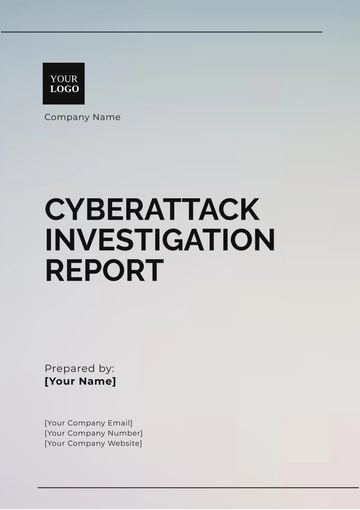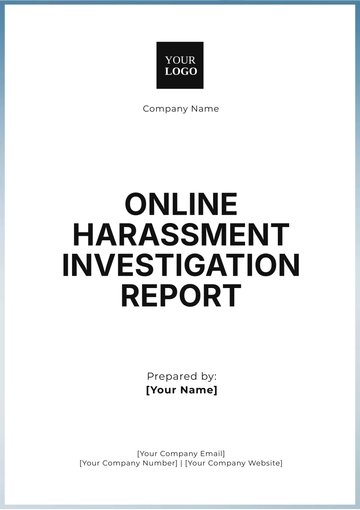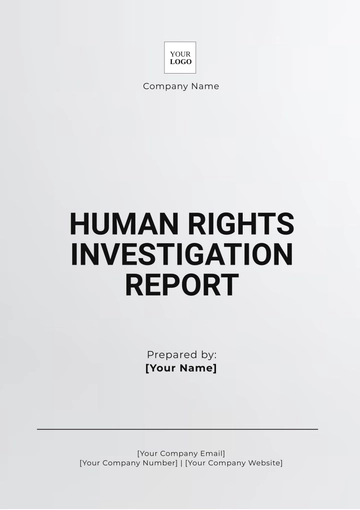Free Administrative Investigation Report
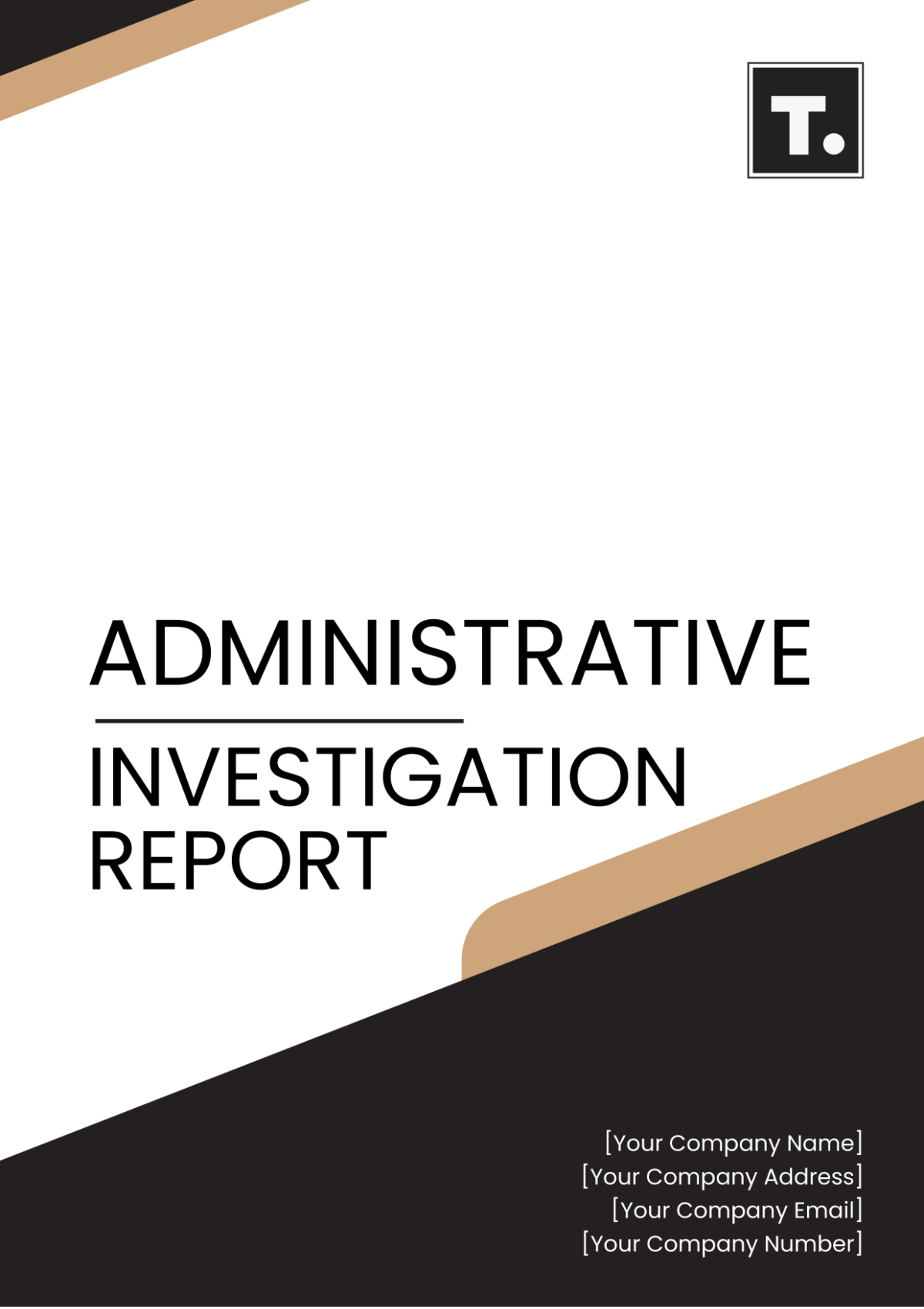
Prepared by: [Your Name]
Date: January 15, 2052
I. Executive Summary
This investigation was conducted to address allegations of embezzlement against the Chief Financial Officer (CFO) of [Your Company Name]. The investigation process included reviewing financial records, conducting interviews, and gathering relevant documentation. The findings and recommendations are summarized below.
II. Background
A. Incident Overview
On December 1, 2051, the Board of Directors of [Your Company Name] received a tip-off regarding potential financial misconduct by the CFO, John Smith. The allegations included unauthorized transactions and misappropriation of company funds.
B. Objective
The objective of this investigation is to determine the validity of the embezzlement allegations against the CFO and to provide recommendations for remedial actions.
III. Methodology
A. Data Collection
The investigation involved the following methods of data collection:
Review of financial statements and records from 2050-2051
Interviews with key personnel and witnesses
Examination of internal emails and communications
B. Analysis
All collected data were thoroughly analyzed using forensic accounting techniques to identify discrepancies and patterns indicative of embezzlement.
IV. Findings
A. Financial Discrepancies
The table below summarizes the major discrepancies found:
Date | Transaction Amount | Discrepancy | Comments |
|---|---|---|---|
January 5, 2050 | $500,000 | $100,000 | Unauthorized transfer to personal account |
June 12, 2051 | $250,000 | $50,000 | Falsified invoices |
B. Interview Summaries
The following key points were obtained from interviews with relevant parties:
John Doe (Accounting Manager): Provided evidence of altered financial records.
Jane Doe (HR Director): Noted unusual spending patterns by the CFO.
V. Conclusion
Based on the findings, it is concluded that the CFO engaged in fraudulent activities resulting in significant financial loss for [Your Company Name]. The evidence supports the allegations of embezzlement.
VI. Recommendations
A. Disciplinary Actions
Immediate termination of the CFO's employment and legal proceedings to recover misappropriated funds.
B. Policy Revisions
Introduction of stricter financial controls and regular audits to prevent future occurrences of embezzlement.
VII. Appendices
A. Financial Data
Financial Statements: Balance sheets, income statements, and cash flow statements.
Bank Transactions: Records of all relevant transactions, detailing dates, amounts, and descriptions.
B. Interviews
Key Personnel: Transcripts summarizing statements and evidence.
C. Documents
Emails: Correspondence regarding suspicious transactions.
Contracts: Agreements indicating potential conflicts or fraud.
Bank Records: Details of unauthorized transfers.
Investigation Reports: Progress and final reports.
Witness Statements: Additional evidence from witnesses.
Legal Documents: Relevant legal paperwork.
For further information, please contact [Your Name] at [Your Email].
- 100% Customizable, free editor
- Access 1 Million+ Templates, photo’s & graphics
- Download or share as a template
- Click and replace photos, graphics, text, backgrounds
- Resize, crop, AI write & more
- Access advanced editor
Enhance your administrative investigations with the Administrative Investigation Report Template from Template.net. This customizable, downloadable, and printable template ensures comprehensive and organized reporting. Editable in our AI Editor Tool, it allows you to tailor every detail to your needs, ensuring accurate and efficient documentation of administrative investigations for better compliance and resolution.
You may also like
- Sales Report
- Daily Report
- Project Report
- Business Report
- Weekly Report
- Incident Report
- Annual Report
- Report Layout
- Report Design
- Progress Report
- Marketing Report
- Company Report
- Monthly Report
- Audit Report
- Status Report
- School Report
- Reports Hr
- Management Report
- Project Status Report
- Handover Report
- Health And Safety Report
- Restaurant Report
- Construction Report
- Research Report
- Evaluation Report
- Investigation Report
- Employee Report
- Advertising Report
- Weekly Status Report
- Project Management Report
- Finance Report
- Service Report
- Technical Report
- Meeting Report
- Quarterly Report
- Inspection Report
- Medical Report
- Test Report
- Summary Report
- Inventory Report
- Valuation Report
- Operations Report
- Payroll Report
- Training Report
- Job Report
- Case Report
- Performance Report
- Board Report
- Internal Audit Report
- Student Report
- Monthly Management Report
- Small Business Report
- Accident Report
- Call Center Report
- Activity Report
- IT and Software Report
- Internship Report
- Visit Report
- Product Report
- Book Report
- Property Report
- Recruitment Report
- University Report
- Event Report
- SEO Report
- Conference Report
- Narrative Report
- Nursing Home Report
- Preschool Report
- Call Report
- Customer Report
- Employee Incident Report
- Accomplishment Report
- Social Media Report
- Work From Home Report
- Security Report
- Damage Report
- Quality Report
- Internal Report
- Nurse Report
- Real Estate Report
- Hotel Report
- Equipment Report
- Credit Report
- Field Report
- Non Profit Report
- Maintenance Report
- News Report
- Survey Report
- Executive Report
- Law Firm Report
- Advertising Agency Report
- Interior Design Report
- Travel Agency Report
- Stock Report
- Salon Report
- Bug Report
- Workplace Report
- Action Report
- Investor Report
- Cleaning Services Report
- Consulting Report
- Freelancer Report
- Site Visit Report
- Trip Report
- Classroom Observation Report
- Vehicle Report
- Final Report
- Software Report
